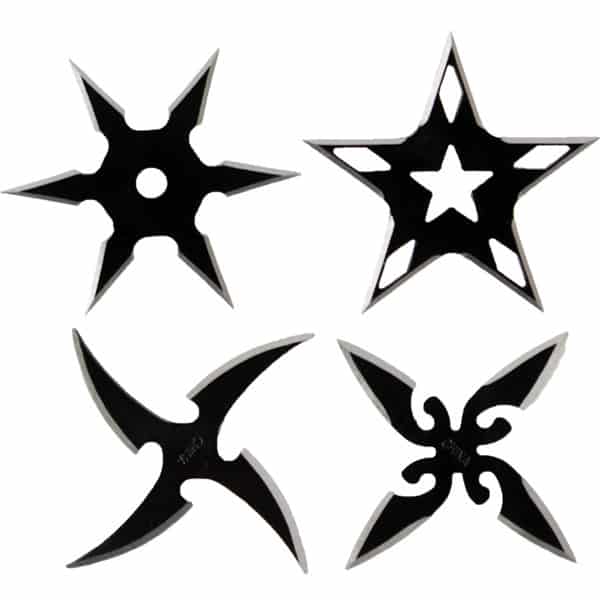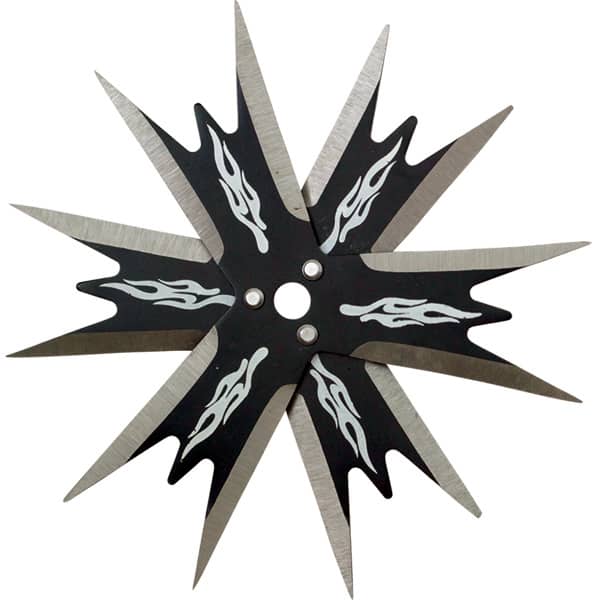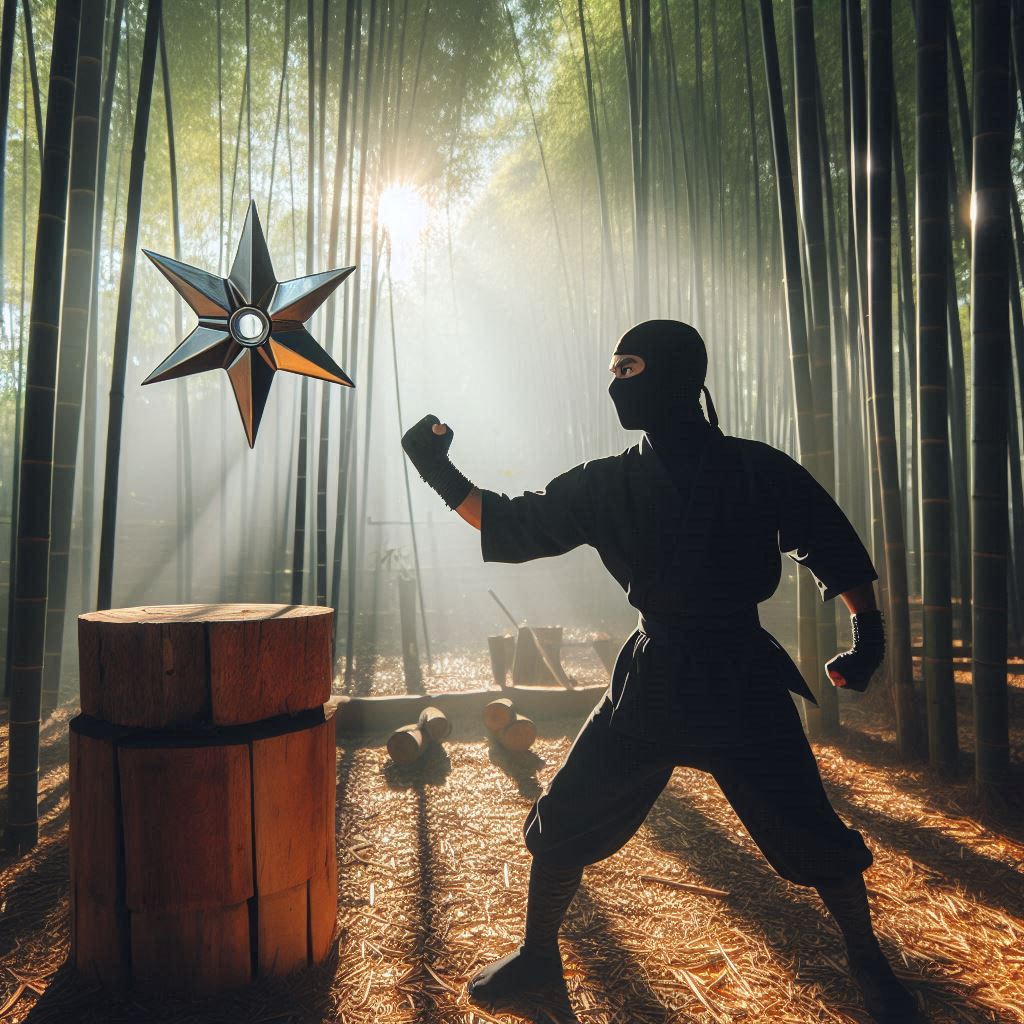
Brainstorm Security Shop

For Orders Over $199

On Any Of Our Products

Details On Refund Page
Have you ever considered the use of throwing stars for self-defense? These traditional weapons not only carry an element of surprise but also require a high level of skill and precision. You might be wondering about their legality and effectiveness as a protective tool. Before you decide to carry one, it’s crucial to familiarize yourself with the associated responsibilities and legal constraints. What’s more, understanding the nuances of training could significantly affect your ability to use them effectively. Let’s explore whether incorporating throwing stars into your self-defense strategy could be a viable option for you.

Throwing stars, known as shuriken in Japanese, have a rich history dating back to feudal Japan. Initially used by ninjas, these weapons weren’t just tools of war but carried immense cultural significance. They were symbols of resistance, stealth, and the ingenuity of those who mastered them.
You’d find them in various design variations, each crafted to meet specific needs. Some were heavy and pointed for piercing armor, while others were lighter and designed for quick, multiple throws.
As you delve deeper, you’ll discover that each design variation of the shuriken was influenced by the unique aspects of the region and the specific techniques of the ninja clans who used them. The materials used, ranging from iron to steel, and even the methods of sharpening the edges, were thoughtfully chosen to increase efficiency and effectiveness in covert operations.
Today, the cultural significance of shuriken continues to resonate. They’re not only celebrated in martial arts but also hold a place in popular media, symbolizing the mysterious and strategic depth of the warriors who once wielded them.
You’re seeing a symbol steeped in history, representing both artistic craftsmanship and lethal precision.
While it’s fascinating to explore the historical and cultural significance of throwing stars, you must also understand the legal implications of owning and using them today. Navigating the legal landscape surrounding these tools is crucial, especially if you’re considering them for self-defense.
Firstly, legal regulations on throwing stars vary widely by location. In some places, they’re classified as concealed weapons, while in others, they might be completely banned. You’ve got to check your local laws to ensure you aren’t unintentionally breaking the law. Ignorance isn’t a viable defense in a court of law.
Moreover, even in areas where throwing stars are legal, self-defense laws still apply. Using a throwing star in a self-defense scenario could be seen as using lethal force, and you must be able to justify your actions under the law. This is a delicate area where the specifics really matter.
Here are some key points to consider:
Staying informed and compliant can help you avoid serious legal troubles.
Before you start practicing with throwing stars, it’s essential to get proper training. Mastering the art isn’t just about throwing; it’s about precise control, timing, and understanding the mechanics behind each throw.
You’ll need to learn specific throwing techniques that can significantly enhance your target accuracy. It’s not as simple as it might seem; each technique requires patience and practice to perfect.
Finding a skilled instructor is crucial. They’ll guide you through the correct stance and grip, which are foundational for effective throwing.
You’ll also learn how to judge distances and adjust your force accordingly, a vital skill that impacts whether your star reaches its target.
As you progress, you’ll start to understand the importance of muscle memory in throwing stars. Consistent practice sessions are key. They not only refine your skills but also help in maintaining them.
Remember, the goal is to achieve consistent target accuracy, which only comes with regular training.
Lastly, always practice in a safe, controlled environment. This ensures your safety and the safety of others around you.
With the right training, you’ll find that mastering throwing stars can be a rewarding and precise skill.

Having honed your skills in throwing stars, you might now wonder about their practicality in real-life situations, especially for self-defense. While throwing stars, or shuriken, carry a significant cultural significance, stemming from their historical use by ninjas in feudal Japan, how do they stack up as a modern self-defense tool?
Here are some key points to consider:
You’ve learned that while throwing stars can serve as a deterrent and provide a psychological edge due to their fearsome reputation and cultural mystique, their practical use requires high skill and specific circumstances.
Consider these factors carefully as you weigh their place in your personal defense strategy.
In evaluating throwing stars for self-defense, it’s essential to compare them with other available tools. Let’s break down the key differences you need to consider regarding effectiveness, ease of use, and the materials from which these weapons are made.
Here’s a quick comparison:
| Feature | Throwing Stars | Pepper Spray | Tactical Pen |
|---|---|---|---|
| Material | Often steel or titanium | Chemical compounds | Metal or plastic |
| Ease of Use | Requires skill in throwing techniques | Simple point and spray | Basic striking skills needed |
| Range | 5-10 meters | 1-3 meters | Close contact |
| Stealth | Silent operation | Audible spray sound | Silent operation |
| Training | Extensive practice needed | Minimal training | Some training advised |
Throwing stars are unique in the materials used—often high-quality metals like steel or titanium enhance durability and effectiveness. Mastering throwing techniques is crucial for accuracy, distinguishing them from more straightforward tools like pepper spray. While a tactical pen also demands skill, it lacks the range of a well-thrown star. You’ll find that understanding these factors can significantly influence your choice of self-defense tool, depending on your comfort with the weapon materials and required skills.

While comparing throwing stars to other self-defense tools highlights their unique requirements and benefits, it’s equally important to focus on safe handling to prevent accidents and ensure effective use.
Throwing stars, or shuriken, require precision and control, not just for effectiveness but also to minimize risks. You’ve got to handle these tools with respect and awareness, considering both their strategic usage and psychological impact.
Here are a few safety tips and best practices to keep in mind:
Yes, you can personalize your throwing stars with various design options and customization techniques, enhancing their aesthetic appeal. Choose colors, engravings, or patterns to reflect your unique style and preferences.
Weather conditions greatly impact your throwing star accuracy. Wind resistance can alter its path, while humidity affects its grip and flight. You’ll need to adjust your technique based on these environmental factors.
You’ll find that legal regulations on age restrictions for purchasing throwing stars vary widely. It’s crucial to check local purchase guidelines to ensure you’re complying with laws in your area.
You’ll find that a quality throwing star, focusing on star materials and throwing techniques, typically costs between $20 to $50. Prices vary based on craftsmanship, material quality, and design complexity.
Yes, you’ll need to maintain them regularly using specific maintenance techniques, focusing on material care to ensure they remain effective and safe. Regular cleaning and proper storage are crucial to prevent damage and deterioration.

As you explore the use of throwing stars for protection, remember their rich history and the importance of legality. You’ll need to train diligently to master these tools effectively. They can be a potent form of self-defense when used correctly, but always compare them to other options to ensure they fit your needs. Above all, prioritize safety and responsible practices. With the right approach, throwing stars can enhance your defense strategy, offering both security and peace of mind.

Brainstorm Security Shop
1867 Caravan Trail
Ste 105
Jacksonville, FL 32216
Call us toll free: (800) 859-5566